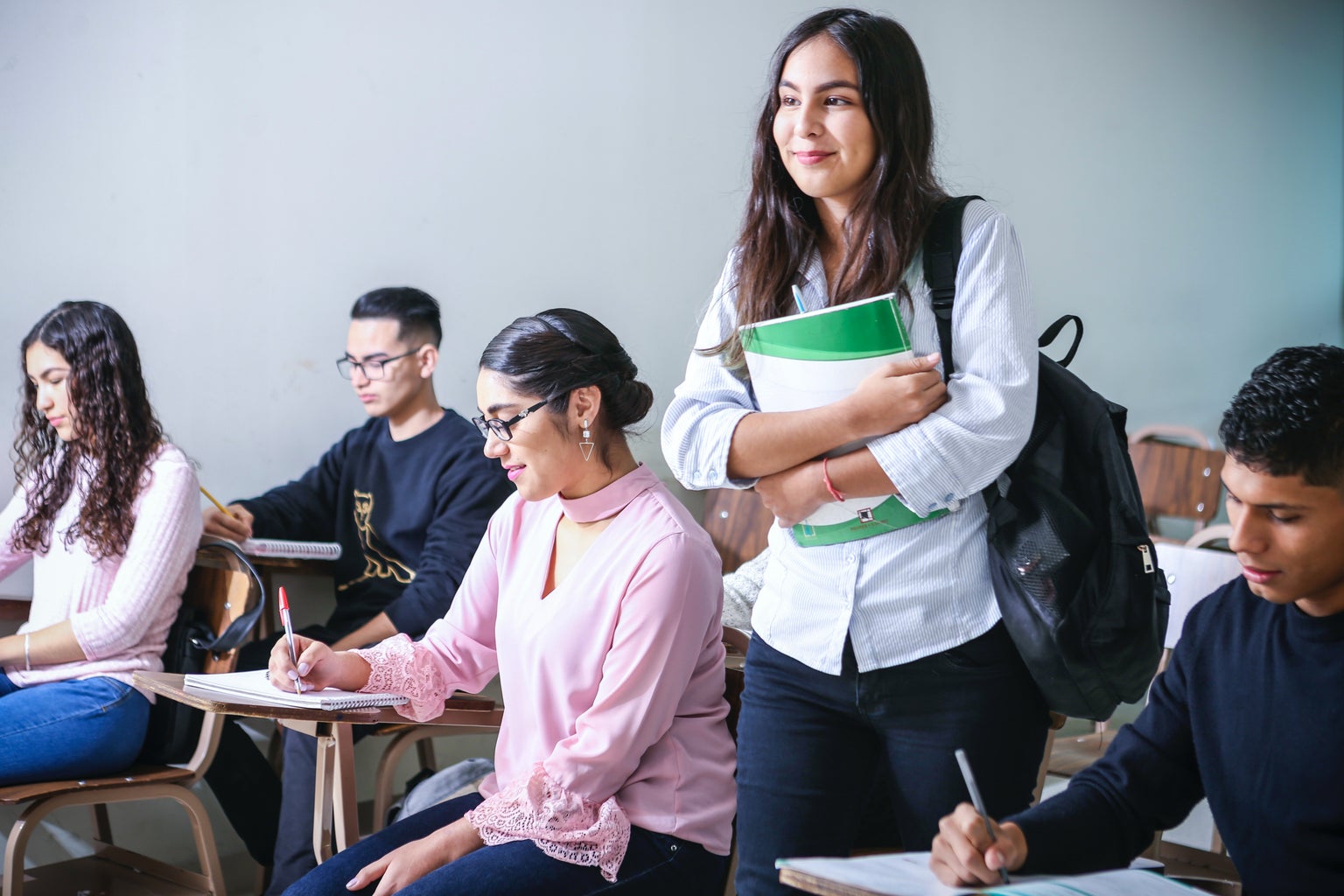In one of my very first speech pathology classes here at CU Boulder, we learned the difference between a speech disability and a speech difference. Basically, a speech disability is just that–a disability that impacts one’s speech–and a speech difference is… well, it could be a lot of things. Most notably, a speech difference is in reference to someone who speaks English or is learning to speak English as a secondary language. Most people who learn to speak English as a secondary language will have an accent, which is not a bad thing at all. But these differences presenting in young emergent bilingual children are often misdiagnosed as a speech disability, and these children are pulled from their classes and put into special education, receiving services that they do not need. If the language difference and acquisition is what needs attention, then special education services will not help. In fact, it could even be detrimental, since many special education programs have their own classrooms and the emergent bilingual child would be moved from their original classroom into a new one, further disrupting their learning by placing them in yet another new and unfamiliar environment.
This phenomenon dates back decades according to sources like Lloyd Dunn’s research back in 1968 on emergent bilingual students who were separated into special education classes. Dunn stresses the importance of fixing this issue quickly, as he predicts that this phenomenon will only spread further and grow in the future. Years later, this hypothesis rings true: bilingual education is still a controversy instead of a right, and students are still suffering.
Laws & Federal Acts
To begin, many federal laws and policies that were meant to help English language learners often hold them back and actually contribute more to the oversaturation of improperly labeled emergent bilingual students in special education programs. For example, several lesson planning systems were based on student expectations listed in the IDEA (Individuals with Disabilities Act), which means that these were new methods purposely created for English language learners with disabilities. A few of these systems included the MTSS (Multi-Tiered System of Support) , which is a general lesson planning system that is meant to help any students that are struggling, and the IEP (Individualized Education Program), which is a personalized plan for individual students depending on their specific educational needs. However, as previously stated, there is a stark contrast between a disability and a difference, and these methods were created for students with both. It is unfortunate that the IDEA specifically took care to mention emergent bilingual students, though their efforts did not seem to decrease or diminish this phenomenon.
Joanne Karger, a policy analyst and research scientist who has a focus on education law, claims that there are two types of laws that are involved with the misdiagnosis of EB (emergent bilingual) students. The two types are those that discuss special education as a whole, and those that discuss language acquisition and learning. The laws that discuss special education mainly fall under the Individuals with Disabilities Education Act (IDEA) which was previously mentioned, but the ones that focus on language learning are based on a broader range of laws. Firstly, the Equal Educational Opportunities Act (EEOA) is a civil rights law that directly addresses school districts and requires them to help EB students in terms of language acquisition and barriers. Additionally, Title I of the Elementary and Secondary Education Act (ESEA) ensures that states conduct annual academic assessments and monitor English proficiency, which is also correlated with language proficiency and acquisition rather than special education. The ESEA was originally amended by the No Child Left Behind Act of 2001 , which has since been surpassed by the Every Student Succeeds Act (ESSA) due to the former’s growing controversy pertaining to outdated, exclusionary, and unsuccessful goals. Additionally, Title III of the ESEA goes further and supplies states and school districts with grants depending on how many emergent bilingual children are being monitored. This also prompts the question of honesty when it comes to reporting the amount of disabled students, as dishonesty in order to receive more funding is not unheard of.
Lastly, Title VI of the Civil Rights Act of 1964 is a civil rights law that prohibits discrimination on the basis of race, color, or national origin in programs that receive federal funding. Though it does not explicitly mention English language learners like the first two acts do, the Office of Civil Rights of the U.S. Department of Education later investigated complaints on the topic and made an official statement on bilingual programs pertaining to the minimal experience an educator needs before teaching in a bilingual education classroom. However, this statement directly contributed to the issue further, as it impacted teacher education when it comes to understanding culturally and linguistically diverse (CLD) students. It is a common criticism that general education teachers are not properly trained to understand CLD students, and though it is not the fault of the individual teacher, it is the fault of the teacher education system. Unfortunately, the ones that suffer from this lack of proper education are the EB and other CLD students, continuing the cycle of lacking education.
Teacher Education
Under Title VI of the Civil Rights Act of 1964, pertaining to English language acquisition, bilingual education does “not require a particular program of instruction” (Karger, 2013). This means that although dual language teachers are supposed to be proficient in a second language, there is a loophole that allows that proficiency to be optional when it comes to hiring English Second Language teachers. It would be optimal for a dual language teacher to be able to be fluent in both languages, and though Title VI claims those are the grounds for qualification, the lack of a particular program certification defeats that statement; the simple claim to be proficient would suffice.
When referring to Lloyd Dunn, the spoken catalyst of this phenomenon, Alba A. Ortiz states that this phenomenon of disproportionality is largely attributed to general education teachers being unequipped to understand culturally and linguistically diverse students. Additionally, Ortiz brings up the “special education referral” excuse that many unequipped teachers would resort to in order to remove possibly disruptive children from the classroom. While using this excuse, teachers would simply label disruptive or otherwise “problematic” students as special education even if they were not tested or diagnosed with any disability. This specifically is allowed through Title I of the Elementary and Secondary Education Act, which partially relies on general education teachers to report on and monitor English language learners in their classroom. With the simple mention of a possible undiagnosed child in a classroom, the school is required by law to test and monitor the student and go from there depending on the results. Regardless, the teacher has a lot of power and responsibility, and often they are not worthy of that power, whether it is due to ignorance or intended malice.
Speech-Language Pathology: A Disability or a Difference?
Though the question revolves around emergent bilingual students being improperly placed in special education programs, there are also cases where a student is classified as an English language learner as well as special education. Referring back to the IDEA, these specific students that have a language disability as well as a difference are more supported than students with a simple difference and an assumed disability. Often, the proper diagnosis lies within the “communication skills” of the student, in which it can determined whether it is something along the lines of a language barrier or something more like a speech impediment.
However, data from a study in urban California in 2005 showed that emergent bilingual students with speech disabilities were “under-represented” in lower elementary grades but “significantly over-represented in the upper grades” (Ortiz, 2020). This brings about another phenomenon in which speech disabilities seem to appear in emergent bilingual students at an older age, compared to the improper overdiagnosis of general special education status in general. The Thomas and Collier model also demonstrates this phenomenon as long as we consider the general results of standardized tests to be accurate in terms of emergent bilingual students generally scoring lower than English proficient students. The model demonstrates lower level elementary students generally keeping up with their peers, but it plummets after about fifth grade, just as the number of speech disability diagnoses does around the same age bracket.
And So…
This phenomenon can be attributed to several factors, ranging from shockingly exclusive (and perhaps not intentional) laws and regulations, a lack of sufficient education for our educators, and the indifference towards the stark difference between a speech disability and a speech difference.
In the sentiment of Lloyd Dunn, this is an issue that will only continue to grow and expand if we do not take action and help these students succeed. People often call children the future of our world, and how can they possibly be equipped to survive and thrive if we do not give everyone a proper opportunity?






